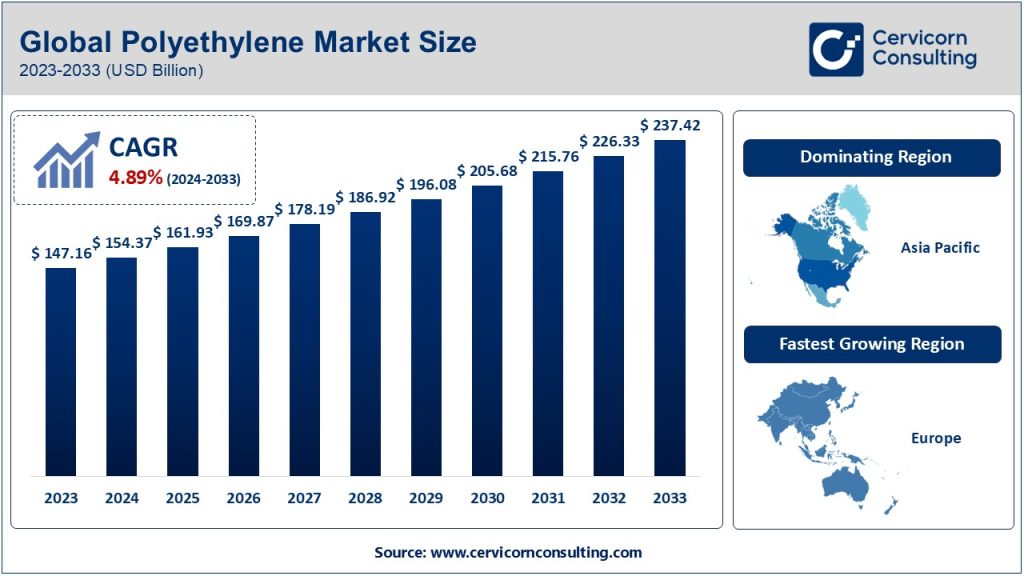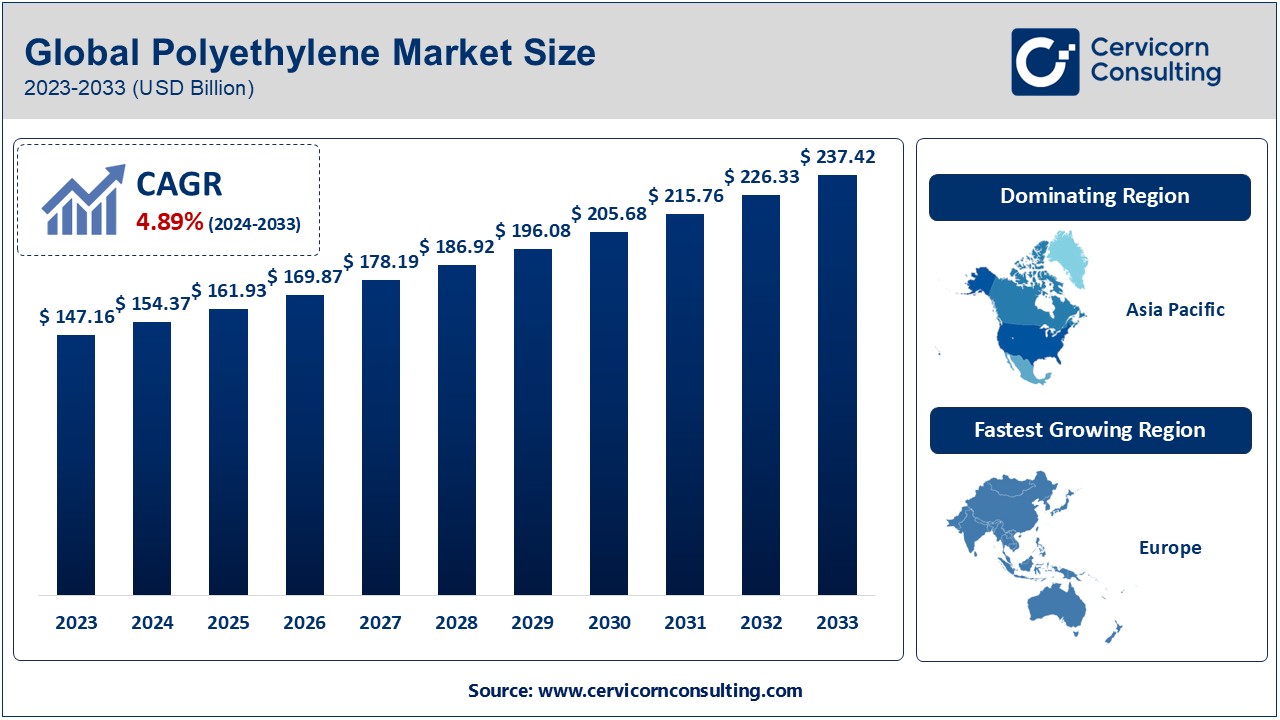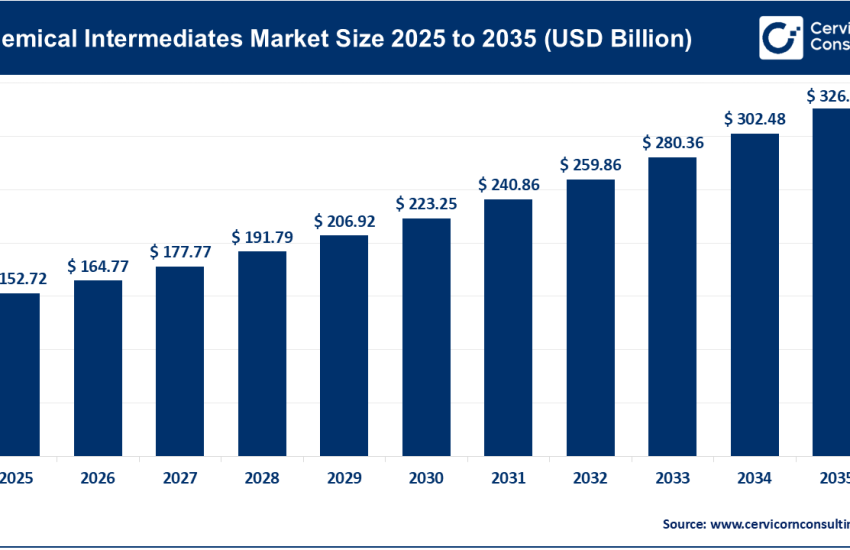Polyethylene Market Overview: Key Drivers, Government Initiatives, and the Impact of Mergers & Acquisitions on Growth (2024 to 2033)
Overview of the Polyethylene Market
The polyethylene market is a significant segment of the global plastics industry, characterised by its extensive applications and robust growth prospects. As of 2023, the market was valued at approximately USD 147.16 billion and is projected to reach around USD 237.42 billion by 2033, reflecting a compound annual growth rate (CAGR) of 4.89% during the forecast period from 2024 to 2033. This growth is driven by increasing demand across various sectors, particularly packaging, construction, and automotive industries.

How are regional government initiatives affecting polyethylene markets?
Government initiatives significantly impact the polyethylene market across different regions by shaping policies, regulations, and incentives that influence production, consumption, and sustainability practices. Here are some key ways in which these initiatives are affecting the market:
North America
Regulatory Measures: Businesses are being encouraged to embrace more sustainable practices in the United States by government rules designed to reduce plastic pollution. In line with more general environmental objectives, this involves expenditures in recycling technologies and the creation of biodegradable substitutes. Additionally, the shale gas boom has given polyethylene producers a competitive edge by reducing feedstock costs and fostering market expansion.
Asia Pacific
Infrastructure Development: Major infrastructure projects in China are being fuelled by government programs like the Belt and Road Initiative, which is raising the demand for polyethylene in the building industry. Furthermore, indigenous production capabilities are being promoted by less stringent regulations on foreign investments in the chemical industry.
Support for Local manufacture: By promoting local manufacture and investment in the petrochemical industry, India’s “Make in India” campaign increases the country’s capacity to produce polyethylene. Meeting the rising domestic demand brought on by a burgeoning middle class requires this undertaking.
Latin America
Petrochemical Sector Investment: Foreign direct investments have been drawn to Brazil due to government measures that support the petrochemical sector. Stable feedstock supply for the manufacturing of polyethylene is made possible by the nation’s wealth of natural resources. Brazil’s position as a major participant in the polyethylene industry is further strengthened by initiatives to modernise production facilities.
Get Free Sample: https://www.cervicornconsulting.com/sample/2451
Sustainability Initiatives
Encouragement of Eco-Friendly Practices: Governments all around the world are putting policies into place to improve recycling facilities and cut down on plastic waste. In order to promote sustainable farming methods and lessen dependency on traditional plastics, Brazil’s National Low Carbon Agriculture Plan, for instance, promotes the use of bio-polyethylene mulch films in agriculture.
Principles of the Circular Economy: Tight laws in Europe encourage the use of bio-based materials, such as bio-polyethylene, in a variety of sectors. These regulations foster an atmosphere that encourages investment and creativity in environmentally friendly substitutes for conventional plastics.



